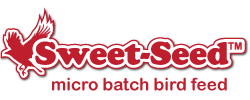The Effect of This Years "Weird" Winter on Migratory Birds

Sweet-Seed™ is headquartered in the Finger Lakes region of New York State, a place normally known for record snowfalls this time of year. But as I look out my window on this mid-January day there is far less of “the white stuff” to be found. In fact, it looked (and felt) far more like April for much of this winter.
You are probably well aware by now that the weather phenomenon known as “El Niño” is what I have to thank for not having to shovel my walkway at all this winter. But it’s also important to understand how this odd weather pattern can cause some serious problems for our friends, the migratory songbird.
According to Science Now, “The population of a migratory bird species drops dramatically whenever El Niño, everybody's favorite source of strange weather, raises its head. If the population of endangered species fluctuates the same way, El Niño could speed their demise.”
Even if it feels warmer outside, birds still need help supplementing their diets during these winter months.
“At a New Hampshire breeding site, Sillett found fewer caterpillars, the warblers' favorite food, during the springs of El Niño years than during other springs. The shortages presumably arose because of changes in the weather, as El Niño generally makes winters warmer and drier than normal throughout the northern United States. With less food to eat, warbler fledglings began life smaller and weaker. Indeed, compared to other years, only 40% as many made it to their wintering grounds in Jamaica. But that was not the end of the warblers' troubles. El Niño also dried out Jamaica, which other researchers have shown cuts into the warblers' winter food supply. So on average only 44% of the birds survived to return the following year, compared with more than 60% at other times.”
If you are reading this, it probably goes without saying that you are feeding this winter. Keep up the good work…especially throughout this wacky winter.

